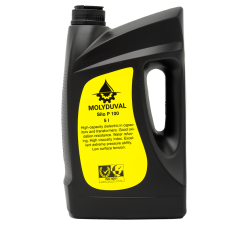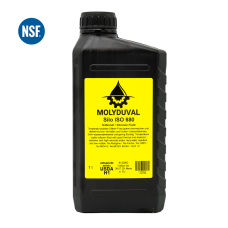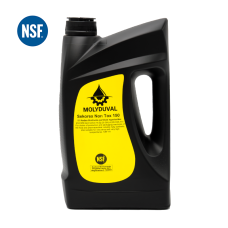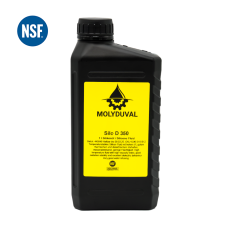Description
Silo D 5000 - High temperature resistant silicone oil for food, medicine and other industries
Silicone-based fluid with unique properties because it is not a petroleum or organic chemistry. Products like this are the first, and still only, major class of polymers that are a product of inorganic chemistry. It has a remarkable diversity of uses - from brake fluids over lubrication to electronics. It makes excellent, safe, low- low-volatility heat transfer media, mold releases for rubber, plastic, and glass parts, lubrication for most non-metal-to-metal contact, and similar. It is found in hydraulic systems, inertial guidance systems, delicate timing, and photographic devices, and as dielectric fluids in electronic components, such as capacitors and transformers. Also suitable for polish and other high-gloss water-repellent coatings, antifoams, grease, and oil formulations (when mixed with thickeners, such as silica and bentonite). High-performance greases can be produced by compounding the silicone fluid with extreme-pressure additives, such as polytetrafluoroethylene or molybdenum disulfide.
Properties
• exceptional lubricating and separating properties
• water refusing
• chemically inert to most materials like plastic and rubber
• high viscosity index
• nontoxic
• wide temperature range
• longer service life due to high thermal stability
• good oxidation resistance
• relative good compatible with many usually used sealants
• high flash point
• Food grade, i.e. the product fulfills the requirements for an H1 lubricant for use in the food industry
• harmless
• low surface tension
• excellent dielectric properties
• low steam pressure
• neutral to metal surfaces
• compatible with many seals and plastics
• tasteless
• high compressibility
• odor less
Applications
• for assembly of O-rings
• for heat transmission
• as an additive to care products, washing fluids, plastic cleaners
• as a release agent in welding
• as a release agent for plastic and rubber molds, foams, and latex
• as a sliding agent to plastics, in the printing or textile industry
• as a sliding agent for fibers, for increasing sliding properties of sewing fibers, it reduces danger of wresting
• as a release agent for molded rubber parts, urethanes, glues, cellulose and derivatives, vinyl, and compounds
• as heat transfer fluid
• for sealing connections in the presence of solvents or their vapors
• as a lubricant for mixers and conveyors
• as a lubricant for rubber, latex, and plastics
• as water repellent agent for shoes, gloves, or the roof of convertibles
• incorporated as additives into plastics and rubbers as process and release aid
Related products
Availability 1
Availability 1
Availability 1






/800x800%20Sil-800x800.png)
/3rd%20photo%20SILLL-800x800.png)
/2%20%20Photo%20SIll-800x800.png)


/800x800a-228x228.png)








